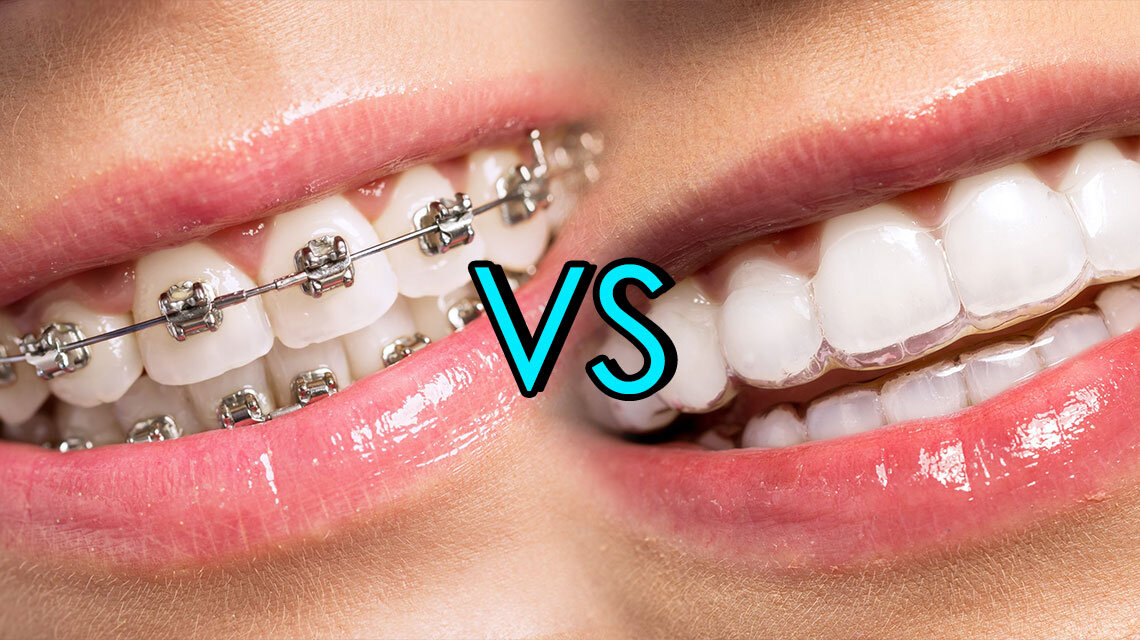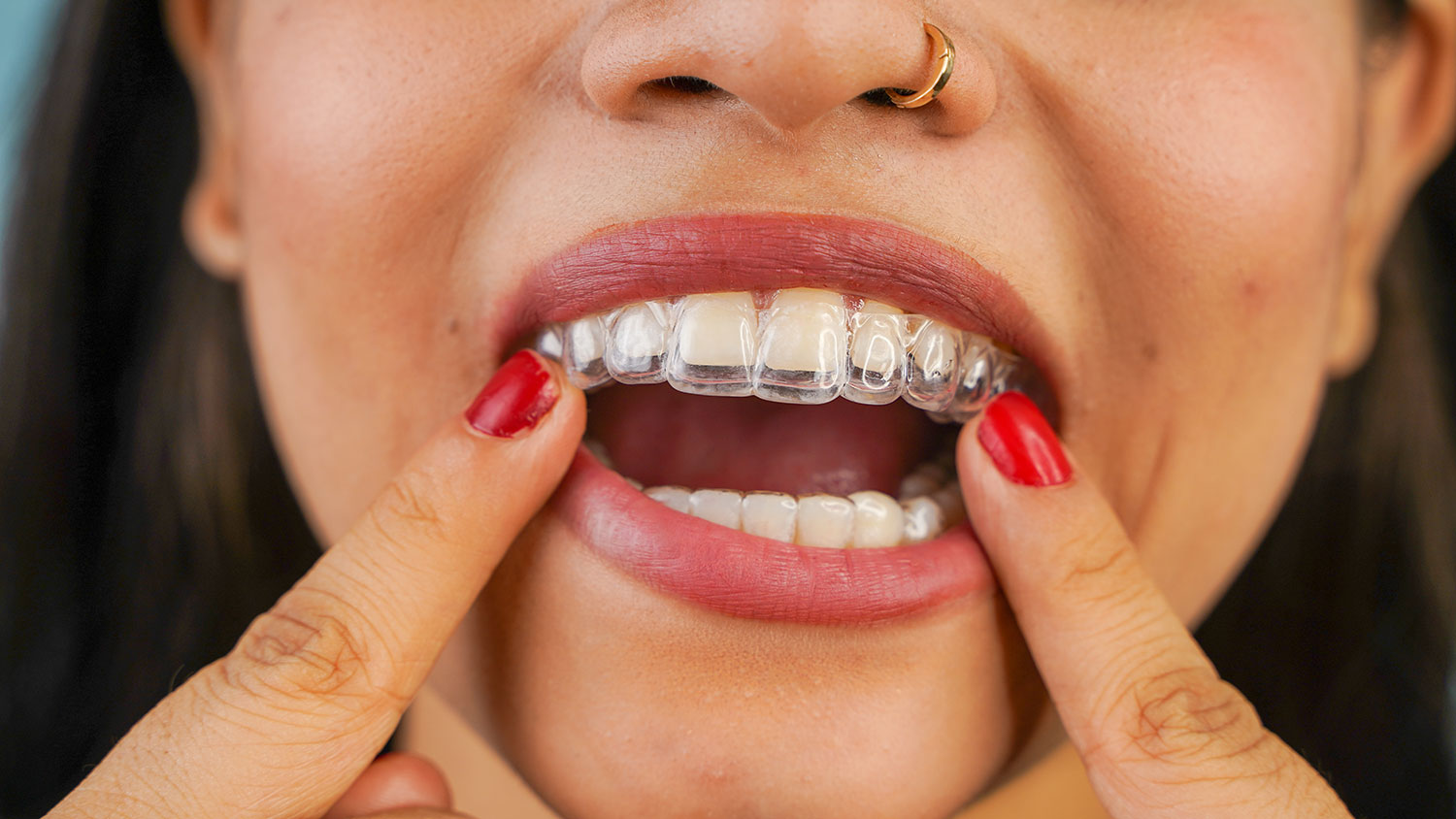Success Stories: How Invisalign Changed Lives and Enhanced Confidence
Success Stories: How Invisalign Changed Lives and Enhanced Confidence
Blog Article
Invisalign vs. Standard Dental braces: Which Choice Is Right for You?
When thinking about orthodontic therapy, the selection in between Invisalign and typical braces offers a number of crucial variables that warrant careful examination. Invisalign uses a very discreet choice with removable aligners, while traditional dental braces provide an extra noticeable yet effective remedy for severe imbalance.
Review of Therapy Alternatives

In contrast, standard braces consist of metal braces and cables that are bonded to the teeth. This technique uses continual stress with time to attain alignment. While effective for complicated orthodontic concerns, typical braces need routine sees for modifications and can pose obstacles in keeping oral health because of the problem of cleaning up about cords and brackets.
Both options have their values, and the selection commonly hinges on specific oral problems, way of living choices, and person compliance. Inevitably, consulting an orthodontic specialist is vital for establishing the most suitable treatment strategy tailored to individual requirements. Understanding the subtleties of each choice can substantially affect the overall success of orthodontic therapy.
Visual Considerations
A substantial variable affecting the choice in between Invisalign and conventional braces is the aesthetic charm each therapy supplies. Invisalign aligners are crafted from clear plastic, making them basically unseen when worn. This discreet appearance is particularly attracting teenagers and adults who may really feel uneasy about their orthodontic therapy. The capability to preserve an all-natural smile throughout the placement procedure can considerably boost the client's self-confidence in specialist and social settings.
On the other hand, conventional braces are composed of steel braces and wires, which can be a lot more obvious. While innovations in orthodontic innovation have resulted in the growth of smaller brackets and tinted elastics, traditional dental braces still preserve an even more conspicuous profile. For some individuals, the exposure of braces may discourage them from looking for needed treatment.
Ultimately, the option between Invisalign and standard dental braces might depend upon individual choices concerning aesthetic appeals. Clients who focus on discretion often lean toward Invisalign, while those who are less concerned about presence may choose conventional dental braces. Comprehending the visual implications of each choice is crucial for making a notified choice that aligns with one's way of living and choices.
Comfort and Convenience

In terms of ease, Invisalign aligners are detachable, making it possible for clients to appreciate their favored foods without constraint and maintain optimum oral health. Cleaning and flossing are streamlined, as the aligners can be obtained during these routines, whereas typical braces require careful steering around brackets and cables.
In addition, Invisalign's modern system allows for less orthodontic brows through. People usually get several sets of aligners simultaneously, which can simplify the therapy process and lower time invested in the orthodontist's chair. In contrast, conventional braces require normal modifications, making them less hassle-free for those with hectic schedules. Invisalign. Generally, the convenience and benefit of Invisalign make it an attractive selection for lots of people seeking orthodontic treatment.
Therapy Duration and Performance
While both pop over here Invisalign and typical braces work in fixing dental misalignments, the duration of therapy can vary considerably between the two choices. Commonly, Invisalign therapy can take anywhere from 12 to 18 months, depending upon the complexity of the instance. The clear aligners function by progressively moving teeth into their preferred placements, and regular follow-ups with an orthodontist assistance guarantee progression continues to be on track.
On the other hand, typical dental braces usually require a longer dedication, normally ranging from 18 months to 3 years. This results from their fixed nature and using brackets and wires, which can be a lot more effective for intricate instances and extreme misalignments (Invisalign). The therapy efficiency of standard braces is well-documented, as they permit specific changes and higher control over tooth movement
Inevitably, the selection in between Invisalign and conventional dental braces might pivot on both the expected treatment duration and the certain dental issues at hand. Consulting with an orthodontist is essential, as they can supply tailored recommendations based upon individual requirements, making certain the selected technique aligns with desired durations and outcomes.
Expense Contrast and Insurance Options
Price plays a significant duty in the decision-making process for individuals thinking about orthodontic therapy, whether opting for Invisalign or conventional braces. Typically, the cost of Invisalign ranges from $3,000 to $8,000, while standard dental braces check my reference generally set you back in between $2,000 and $6,000. Elements influencing these expenses consist of the intricacy of the case, the period of therapy, and geographical location.
Insurance coverage can substantially affect out-of-pocket expenses. Lots of oral insurance plans give partial coverage for orthodontic treatments, but the specifics can vary extensively. It is important for people to evaluate their insurance coverage to figure out the extent of coverage for either alternative. Normally, traditional dental braces may be much more regularly covered by insurance coverage strategies compared to Invisalign, which some insurance companies categorize as a cosmetic procedure.
Furthermore, a number of orthodontic methods use versatile layaway plan, making both treatment choices a lot more available. Individuals ought to ask about potential financing choices and price cuts for ahead of time repayments. Evaluating the total expense, including insurance coverage advantages and payment strategies, is vital for making a notified decision that lines up with both aesthetic preferences and budget plan factors to consider.

Final Thought
In recap, the option between Invisalign and traditional braces pivots on several aspects, consisting of visual choices, comfort, treatment period, and expense. Invisalign supplies a discreet, detachable alternative that helps with oral hygiene and nutritional adaptability, while traditional dental braces may be a lot more suitable for intricate oral problems and often come with a lower rate factor. Ultimately, assessment with an orthodontist is important to analyze specific situations and establish the most proper treatment option for attaining optimal dental placement.
When taking into consideration orthodontic therapy, the selection between Invisalign and typical dental braces offers numerous essential elements that warrant cautious assessment.Comparing Invisalign and conventional braces exposes unique treatment options for orthodontic adjustment.While both Invisalign and standard braces are efficient in dealing with oral misalignments, the period of therapy can vary substantially in between the two choices.Price plays a substantial duty in the decision-making procedure for people taking into consideration orthodontic therapy, whether deciding for Invisalign or conventional braces.In summary, the selection in between Invisalign and typical braces hinges on numerous aspects, including aesthetic choices, convenience, her response therapy duration, and price.
Report this page